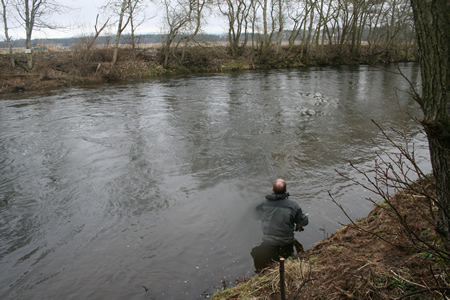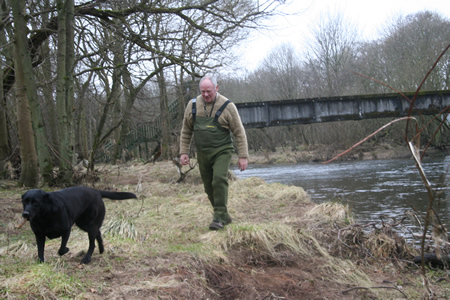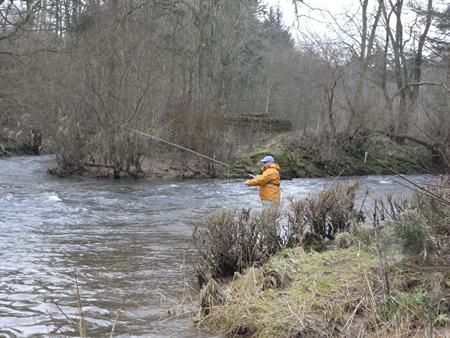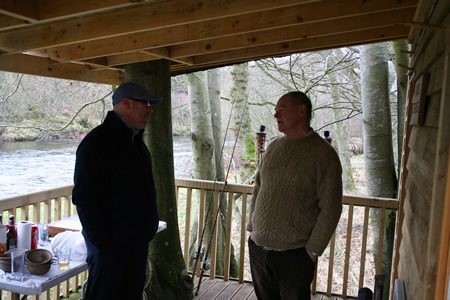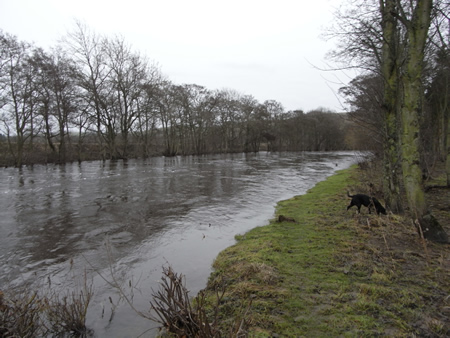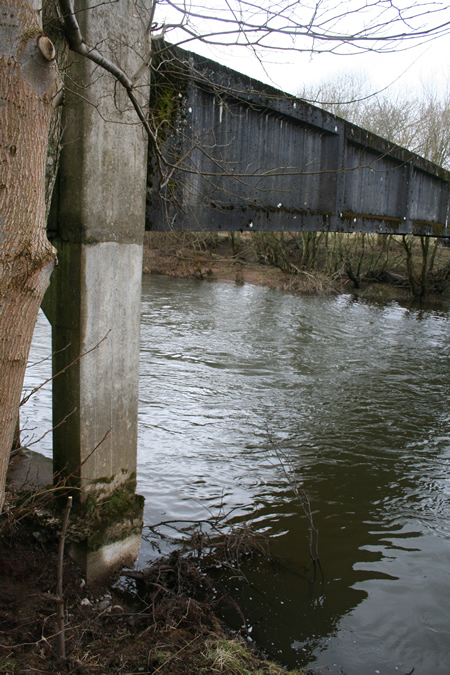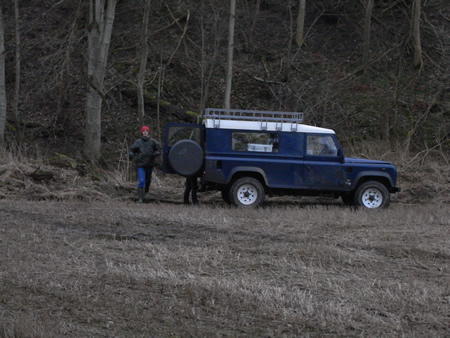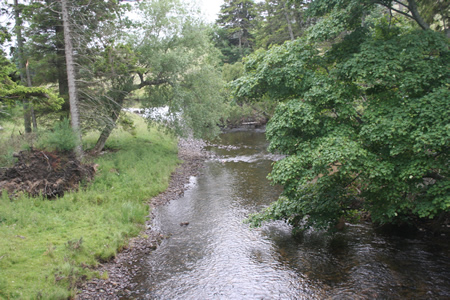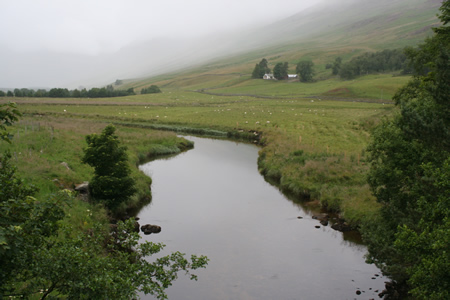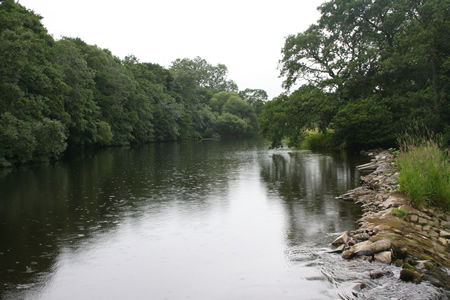These bulletin blogs represent news about Finavon and the South Esk, and my views as a riparian owner. They are not the views of any other organisation, nor are they designed to promote the interests of any individual or organisation other than Finavon Castle Water and factors affecting the fishery. Tony Andrews
The South Esk is centre stage in Scottish salmon fishery politics – yet again. The decision of the Scottish Government to revoke the licence for Usan Fisheries to fish in September, increasing interest in the river (see paragraph below), the never-ending debate about mixed stocks coastal nets, the issue of keep-ins (nets fishing through the statutory weekend close times), and the prospect of netting interests exploiting Scottish salmon saved by the decision to end mixed stocks netting on the English NE coast, all amount to a level of attention on the South Esk that, at some future moment, will surely lead to changes in the current regime of wild salmon and sea trout management.
As the recipient of EU Life Funding, priority SEPA funding to deal with diffuse agricultural pollution, the SEPA Rottal Burn Restoration Project, Marine Scotland’s ‘model’ fishery management project and spring salmon tracking, as an SAC with the benefits of EU Habitat Directive protection and supported by a very successful catchment management partnership and plan, you would have thought we should all be basking in contentment, but sadly that isn’t the case.
“Why on earth not?” you may ask, “with all that support the Southie must be the most favoured of all Scottish rivers”. Well, in a way you would be right. The river is getting a level of attention, study and funding that any of our beleaguered west coast rivers would be glad to accept.
Unfortunately the South Esk is the crucible of the worst case of mixed stocks coastal netting of wild Atlantic salmon and sea trout anywhere in the North Atlantic region. The only possible exception is the unsustainable Finnmark fishery where Norwegian netsmen are ‘stealing’ salmon bound for Russian rivers, and inciting a diplomatic row by continuing to exist. Diplomatic stand-offs with Russia usually end in a Russian victory, so I wouldn’t be placing any bets on the future of the Finnmark fishery!
Even the English coastal nets exploiting mixed stocks now have a limited lifespan. Salmon saved by the end of coastal netting south of the border are largely of Scottish origin. Fish saved by that uncharacteristic decision of the Westminster Government to practise genuine conservation will find themselves enmeshed, killed and sent to market by a small group of people continuing the outdated practice of mixed stocks coastal netting on Scotland’s east coast. There are lots of ways to get to Billingsgate, but via Montrose seems to be the only one for dead salmon.
Unless; Yes, unless the Scottish Government takes action after recognising that killing salmon belonging to the Dee, Don, North Esk, South Esk and Tay (and who knows how many other rivers – ‘the rivers in between’?) is causing serious damage to the economies in the river catchments of east Scotland. Rural communities from Strathdon to Blair Atholl, in Grampian and Tayside are losing out on an income which rightfully should be theirs. I doubt if a single fishery owner is making a profit from letting fishing, but local businesses, especially hotels, B&Bs, cafes, restaurants, tourist hubs, clothing and tackle shops should all be receiving a boost to their income from angling tourism. A regime of exploitation that preserves traditional, artisanal netting interests at the expense of the livelihhods of many hundreds of ordinary people, some in remote villages in the catchments of Scotland’s east coast salmon rivers, is surely as dead as a Monty Python parrot! I have deliberately avoided mentioning catch and release, which in conservation terms puts the case for closure of mixed stocks coastal nets beyond debate.
We know that the River Dee earns Deeside about £22 million a year from salmon angling. The estimated 320 salmon killed at Usan in May 2011 would have therefore very likely been a real ‘hit’ on the Deeside economy. If each salmon caught by an angler fishing the Dee is worth about £2,750 to the local economy, and if the exploitation rate of May salmon is about 20%, the ‘hit’ on the Deeside economy by the Usan nets in May 2011 was about 64 x £2,750 = £176,000. Just that one month! And what about the two Esks? By the same calculation the ‘hit’ on the North Esk was about 144 x £2,750 = £396,000 and on the South Esk about 136 x £2,750 = £374,000. Add in the Tay and Don and you start to get a picture of the level of economic and social damage done by one very effective killing machine – during one month in the season! And I haven’t even mentioned the words ‘conservation’ or ‘management’.
If you factor in the probable damage to fragile populations of salmon and sea trout from all affected river catchments, surely the case for regime change is obvious? Or am I missing something? I think not, although I have my suspicions that some old fashioned ideology or prejudice may be driving the agenda: certainly not evidence-based logic, or a recognition that rural communities in the east of Scotland are profoundly impacted by this outdated regime of uncontrolled exploitation of one of Scotland’s most iconic and valuable natural resources.
I am all too aware that these arguments have been put forward by many people – from Lord Hunter in the 1960s, to Lord Nickson’s Salmon Task Force in the 1990s, to the Mixed Stocks Fishing Working Group of 2009. The arguments stand repetition: they need dusting down and re-presenting to remind everyone involved in salmon fishery management that Scotland stands alone as the only country continuing this outdated practice, that in conservation terms mixed stocks coastal netting is simply unsustainable, and that the damage to rural communities is very significant. In my view these arguments cannot be aired too often.
It is just possible that good management, common sense and simple justice will prevail. The question is “when?”
TA
